
The Museum of Wisconsin Art is presenting chairs that Frank Lloyd Wright never saw completed. These designs existed only as sketches and architectural fragments until 2025. After seven decades buried in archives, Wright’s unbuilt chair concepts have been reconstructed for the first time, revealing the master architect’s furniture vision that time forgot.
Designer: Frank Lloyd Wright
Frank Lloyd Wright: Modern Chair Design runs at the Museum of Wisconsin Art in West Bend from October 4, 2025 to January 25, 2026, bringing together more than forty works and newly fabricated chairs based on Wright’s archival drawings.
This isn’t another retrospective celebrating Wright’s famous pieces like the Robie House dining chairs or Imperial Hotel seating. These are the designs that never made it past the drawing board. Conceptual furniture that Wright envisioned but never had the chance to realize during his 70-year career.
The Museum Project Behind the Reconstructions
The project is led by MOWA’s curator of architecture and design Thomas Szolwinski in collaboration with Eric Vogel of the Taliesin Institute, with reconstructions realized by expert makers including S. Lloyd Natof, Wright’s great-grandson, and Stafford Norris III.
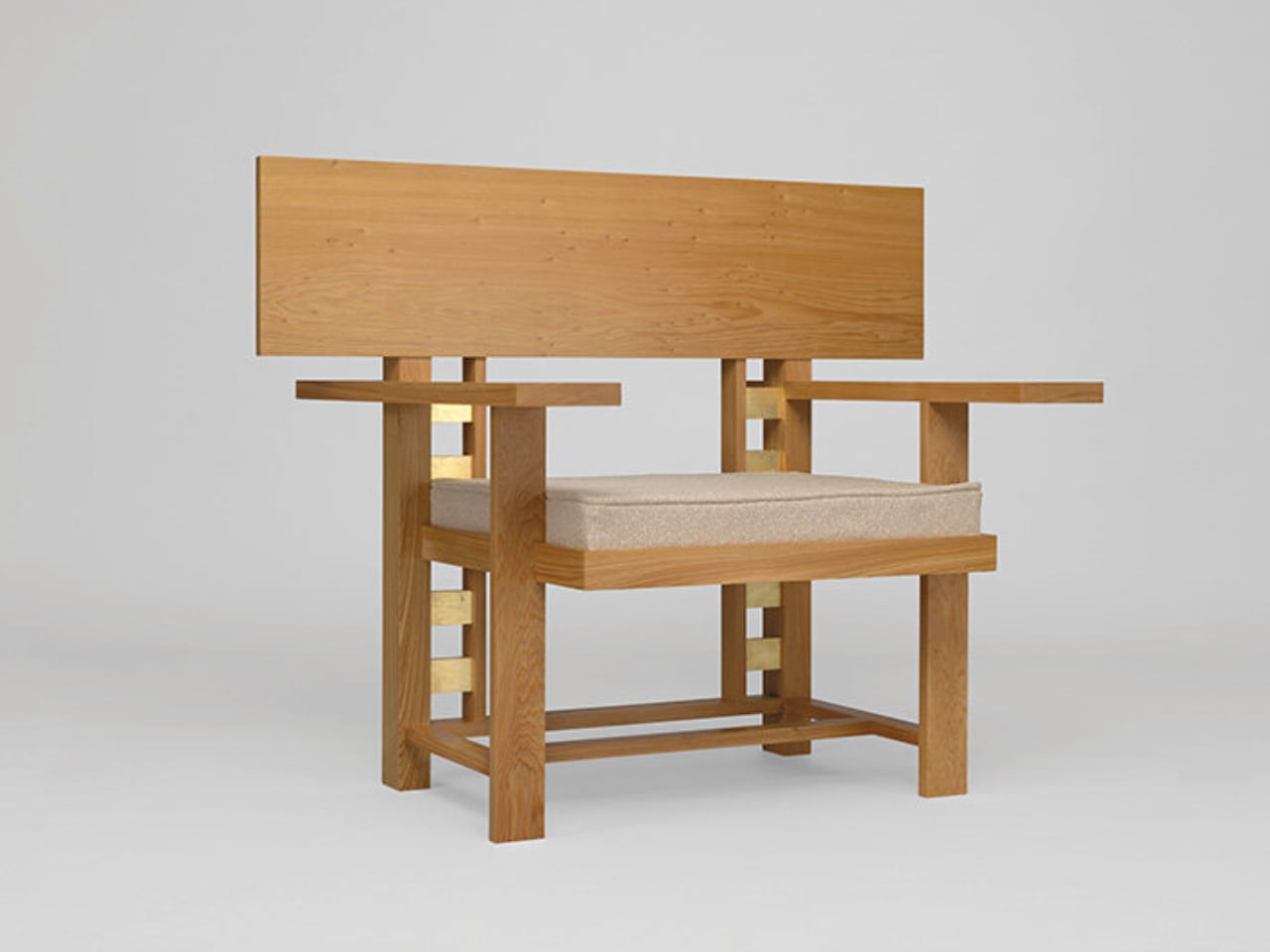
What makes this exhibition remarkable is the completeness of Wright’s documentation. Working with the Frank Lloyd Wright Foundation to access and interpret archival drawings, the team discovered detailed architectural sketches, specifications, and material notes. Wright had essentially created complete furniture blueprints that his contemporaries never executed.
The reconstructed pieces span Wright’s evolution as a furniture designer across five distinct periods from 1911 to 1959. The progression shows his Prairie School geometric sensibilities transitioning through organic forms and culminating in his integration of natural materials with modernist principles.
The detailed drawings uncovered a missing chapter in Wright’s creative story. The designs were filed away in Wright’s personal archive, separate from his architectural projects.
Modern Technology Brings Vintage Designs to Life
Bringing these decades-old concepts to reality required combining traditional woodworking techniques with contemporary precision. The reconstruction team interpreted Wright’s two-dimensional drawings using modern tools while employing period-appropriate joinery methods.
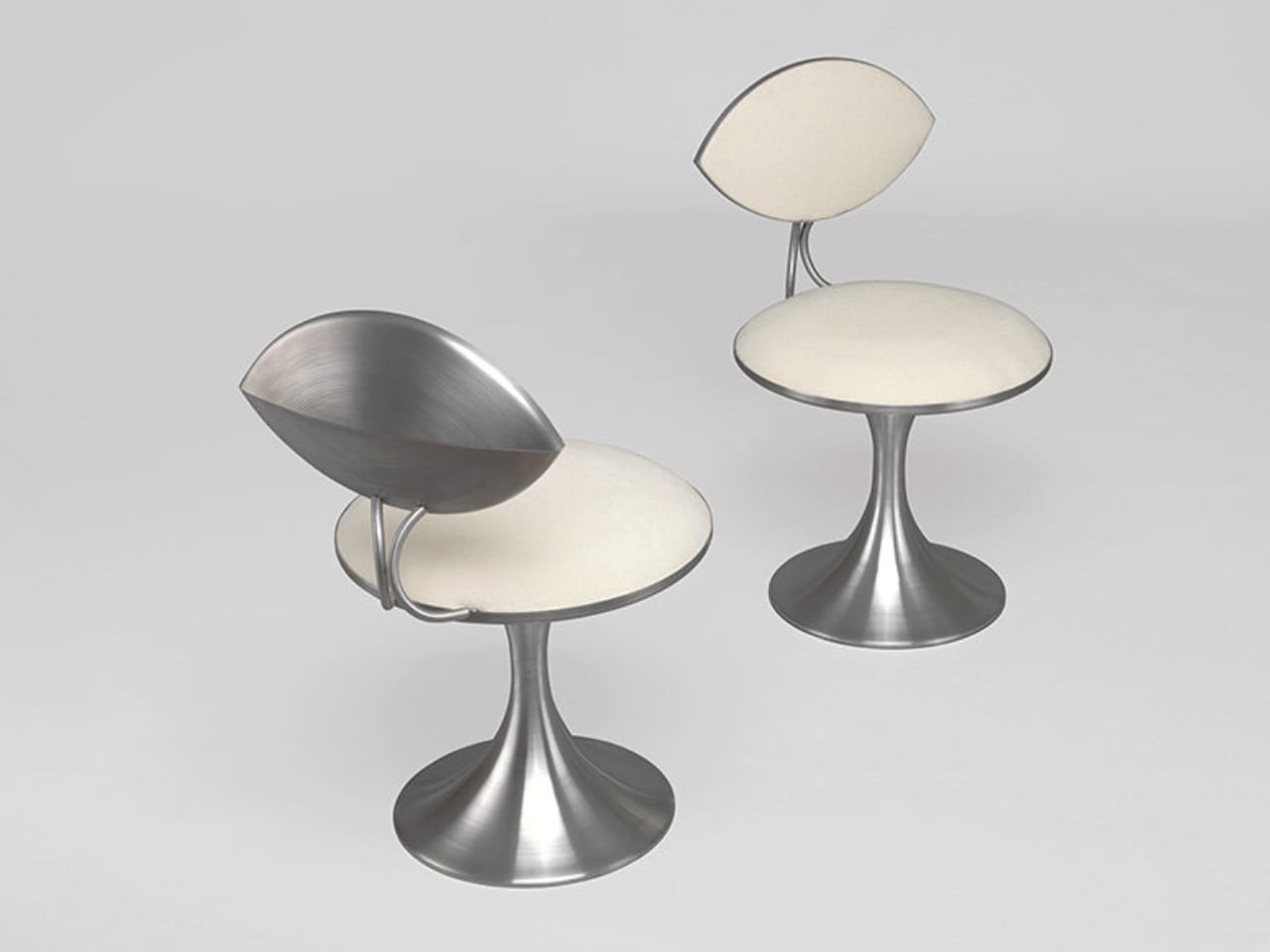
The challenges were significant. Wright’s drawings sometimes lacked crucial construction details, presumably because he expected to supervise the building process personally. The team made educated interpretations based on Wright’s documented furniture-making philosophy and his documented preferences.
The reconstructions showcase diverse materials and techniques. One armchair fabricated in 2025 features cypress with upholstered fabric and gold leaf, demonstrating the range of Wright’s material vocabulary.
Many of Wright’s joint designs pushed materials to their limits, requiring tolerances that were difficult to achieve with mid-century equipment but are now feasible with modern precision tools.
Wright’s Furniture Philosophy on Display
The reconstructed chairs illuminate Wright’s approach to furniture as architectural elements rather than standalone pieces. Each design demonstrates his belief that furniture should emerge organically from the building’s overall design concept. Wright called this “integral ornamentation.”
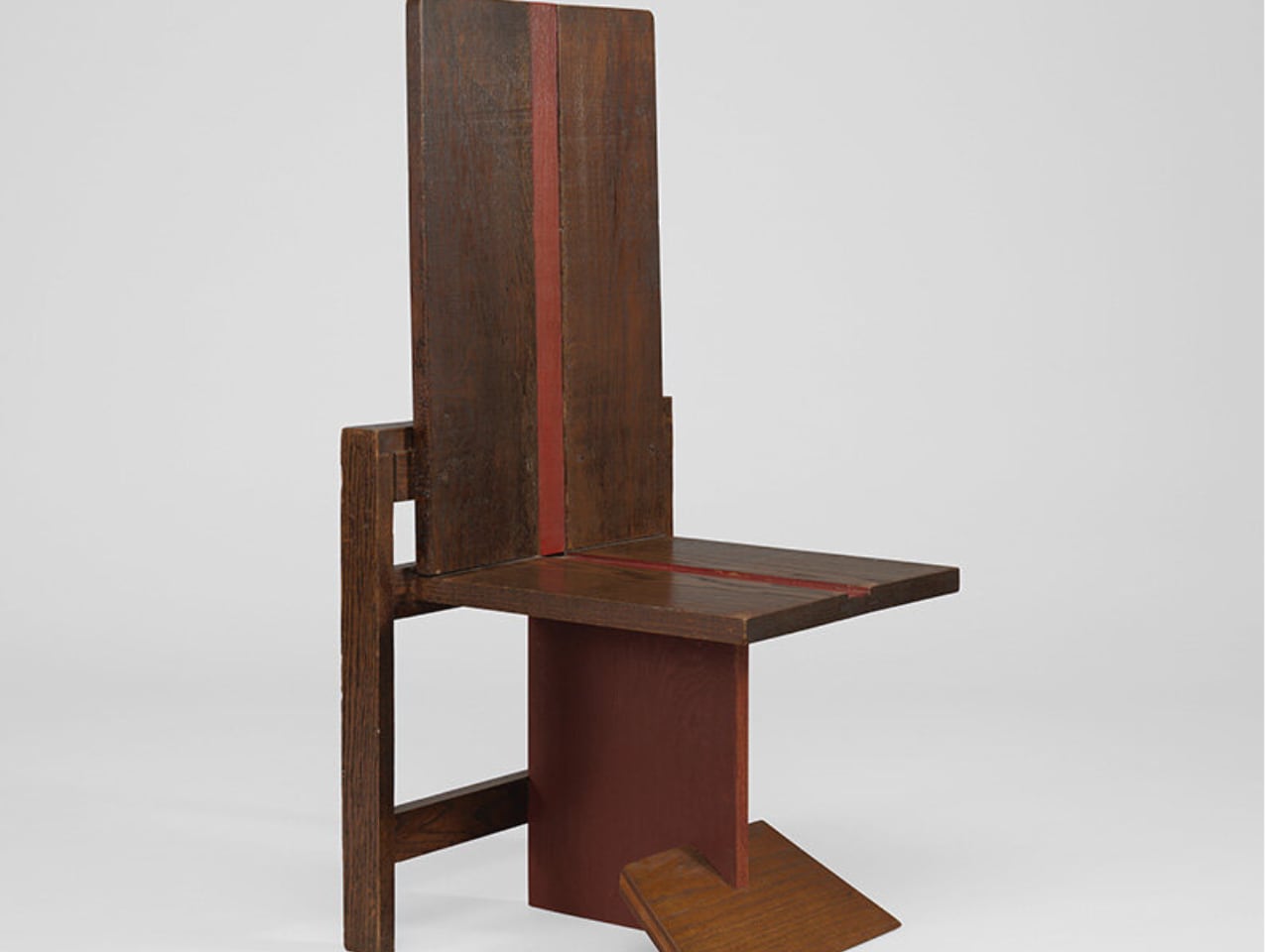
The exhibition traces this philosophy across five distinct periods spanning 1911 to 1959, showing dramatic evolution throughout Wright’s career. Early Prairie School pieces display geometric vocabulary with right angles and linear elements that complement the horizontal emphasis of his prairie houses. Later work reveals significant shifts toward organic forms, with flowing curves that anticipate his Fallingwater period.
Highlights include first-ever fabrications of designs never built during Wright’s lifetime, such as cafe chairs envisioned for the Solomon R. Guggenheim Museum. These cafe chairs, now realized with a Milwaukee metal-spinning firm, represent some of the exhibition’s most significant reconstructions.
Why Wright’s Contemporaries Couldn’t Build These Designs
The reconstructions reveal technical hurdles that explain why Wright’s contemporaries couldn’t execute them. Some designs required techniques that were uncommon in furniture making of that era. Others demanded precision joinery that was difficult to achieve without contemporary tools.
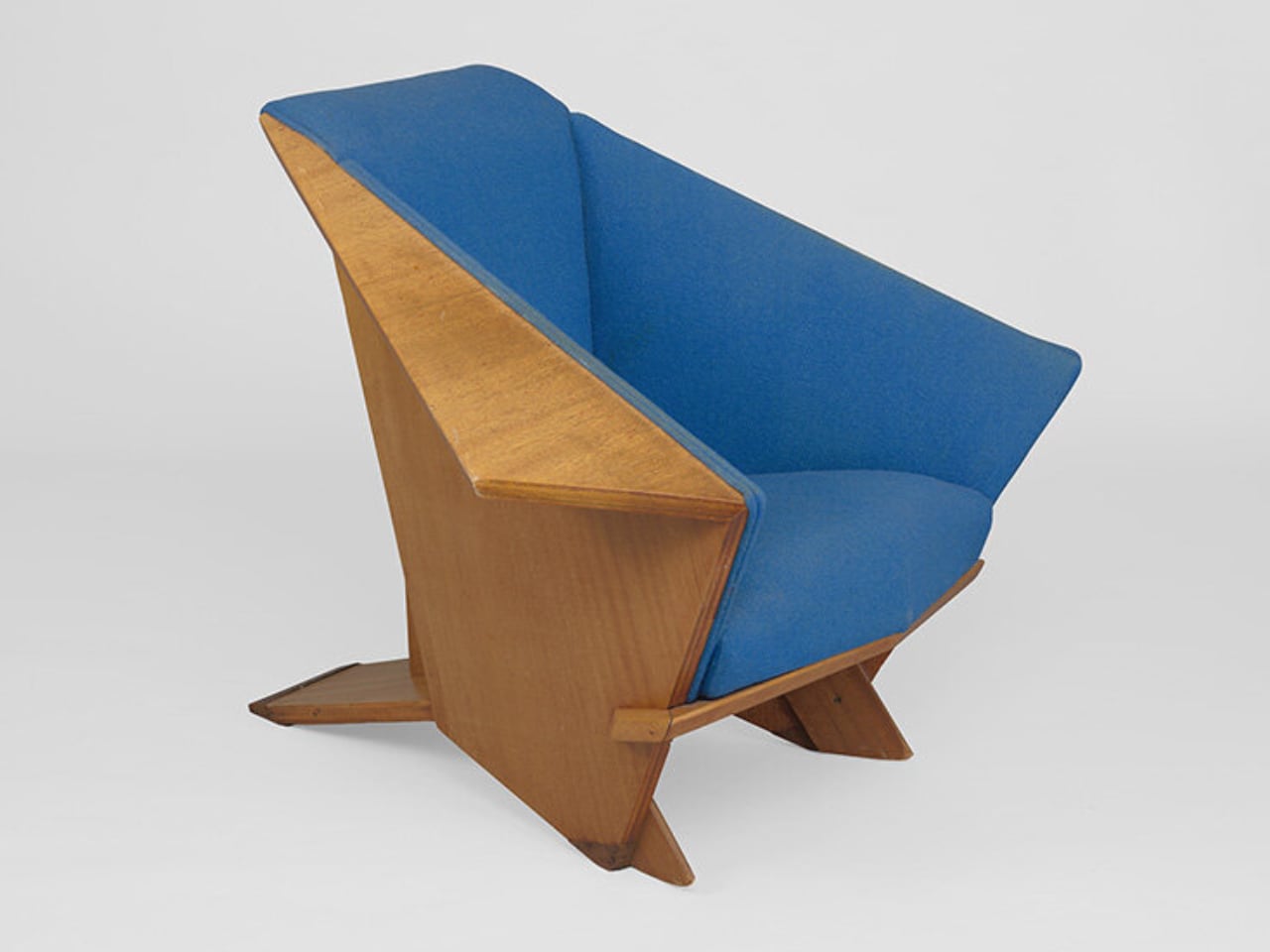
Wright’s specifications often pushed the limits of available materials and techniques. His joint designs required tolerances that were nearly impossible to achieve consistently with period woodworking equipment. Modern craftsmen could execute Wright’s vision precisely because today’s tools and techniques finally match his ambitious specifications.
What seemed impossibly complex decades ago became achievable in 2025 through advances in precision machining and manufacturing.
Exhibition Details and Significance
The exhibition demonstrates how great design transcends its original time period, remaining relevant and inspiring across decades. The reconstructions bring Wright’s architectural principles to physical reality.
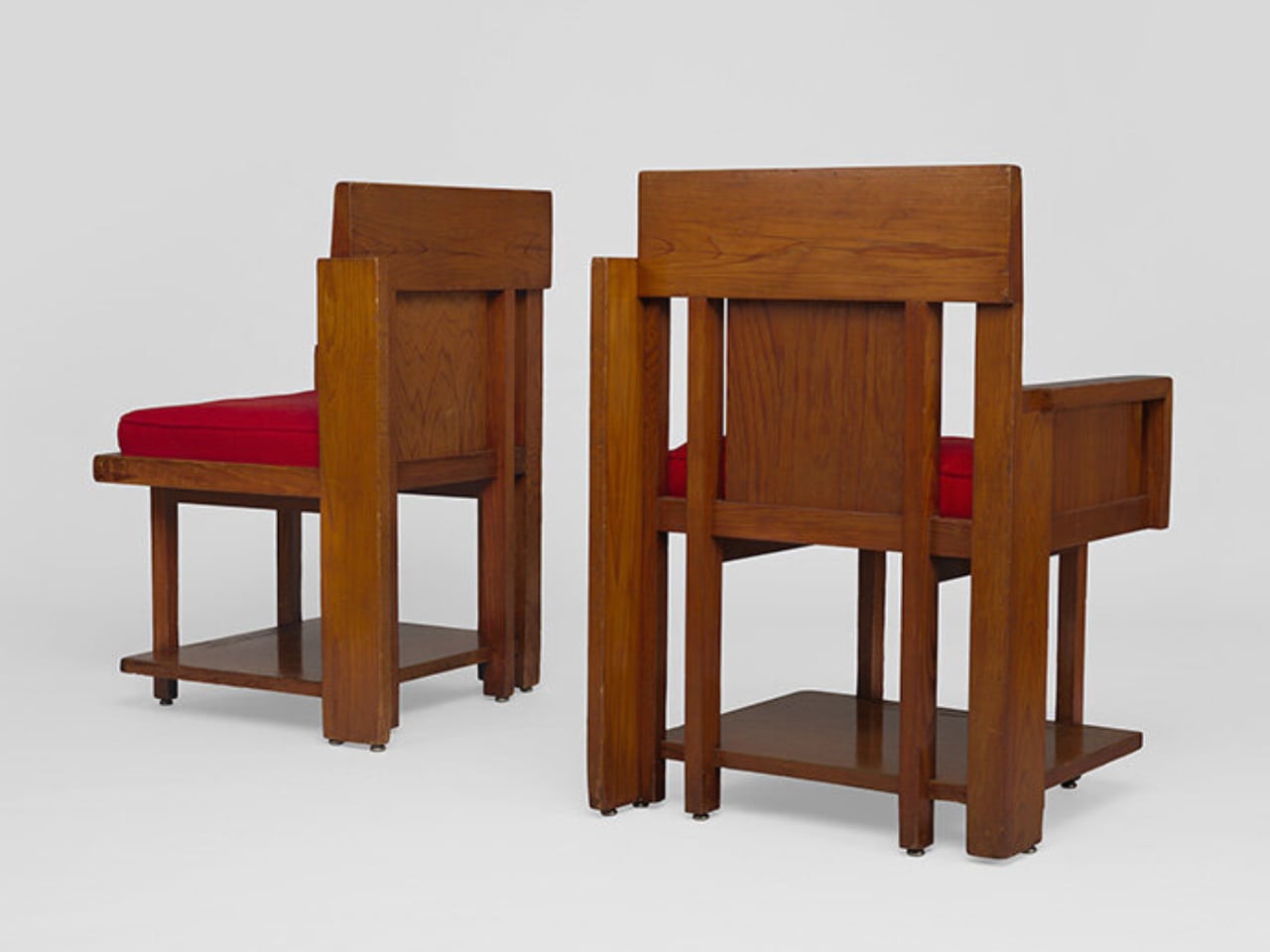
The project also establishes a methodology for recovering other lost design treasures from architectural archives. The systematic approach to interpreting archival drawings and executing reconstructions could apply to unrealized furniture by other mid-century masters.
For Wright scholars, these chairs provide new insights into his creative process during different career phases. The evolution from geometric Prairie School forms to organic modernist curves tells the story of American design’s transformation through the 20th century.
Frank Lloyd Wright: Modern Chair Design continues at the Museum of Wisconsin Art through January 25, 2026. The exhibition offers visitors the chance to experience furniture designs that were lost to time but never lost to imagination.
The post Frank Lloyd Wright’s Long-Lost Chair Designs Finally Come to Life After 70 Years first appeared on Yanko Design.
Read More . . .|
 | Tweet
| Tweet